Pandemic Resilient Design
Engineering solutions alone cannot prevent or eliminate viruses in indoor environments. The objective of pandemic resistant design is to reduce physical transmission from surface to hands to eyes/nose/mouth; lessen airborne virus loads; and improve monitoring and detection.
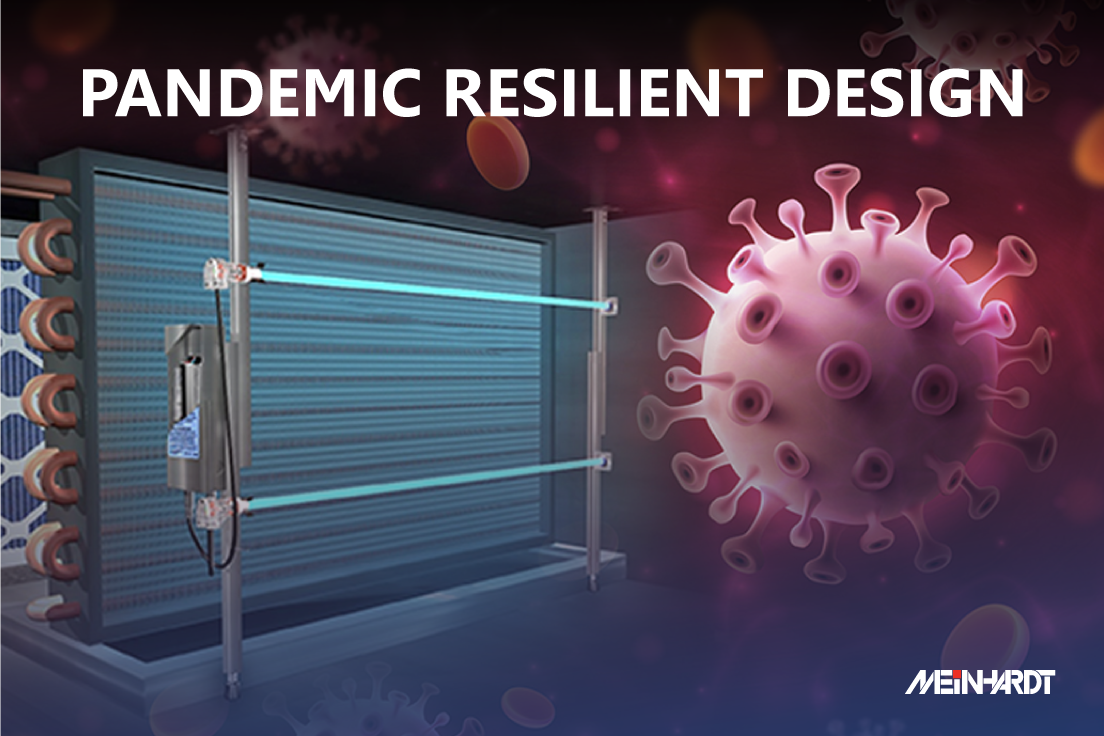
In outdoor environments, the wind and sun disperse viruses and sterilizes surfaces naturally. However, in an indoor environment these natural methods are not available, and we need to consider other methods to reduce the spread of viruses. Mechanisms of virus and infectious disease transmission include: contact (direct and indirect); transmission by large droplets; and inhalation of airborne particles. According to the ASHRAE HVAC Design Manual for Hospitals and Clinics, around 80 to 90% of hospital acquired infections are transmitted by indirect contact (surfaces to hands to eyes/nose/mouth) and 10 to 20% from airborne transmission. Engineering principles developed for hospitals can be applied to commercial buildings; not to the same extent, but still an improvement on the current practices.
How can MEP design engineers adapt existing proven principles to reduce the spread of infectious diseases in indoor environments and help to make buildings safer?
Mechanical Ventilation and Air Conditioning Systems (MVAC)
ASHRAE has just released the Standard 170 Ventilation for Healthcare Facilities (2021). There is still a lot we don’t know about transmission mechanisms, but adapting what we do know is a sound approach, whilst further research takes place.
Methods to reduce transmission by airborne particles may include the following:
- Extraction and Dilution of contaminants through increased ventilation (outdoor air);
- Filtration, to remove virus cells that attached to dust particles;
- Disinfection, such as UVGI (ultraviolet germicidal irradiation) to kill virus cells;
Targeted extract ventilation directly removes air borne particles whilst dilution with increased outside air supply dilutes those virus cells remaining. Energy saving CO2 demand control ventilation systems which aim to optimise outdoor air supply according to actual space occupancy and save energy need to be disabled during occupied periods.
Individual virus cells are too small to be captured by filters directly, however cells attach to dust particles they can be captured with MERV-14 filters. In addition, the cleaner air means less dust settles on surfaces (surface dust can be an environment for bacteria and viruses). Captured cells can be disinfected with a UVGI system, which also kills mould and bacteria that may otherwise accumulate inside an AHU.
UVGI is only effective as a line-of-sight disinfectant and has limited range, and direct exposure to UV light is dangerous. So UVGI is best applied in AHU’s, not through direct exposure into rooms in commercial buildings via UV robots and similar devices.
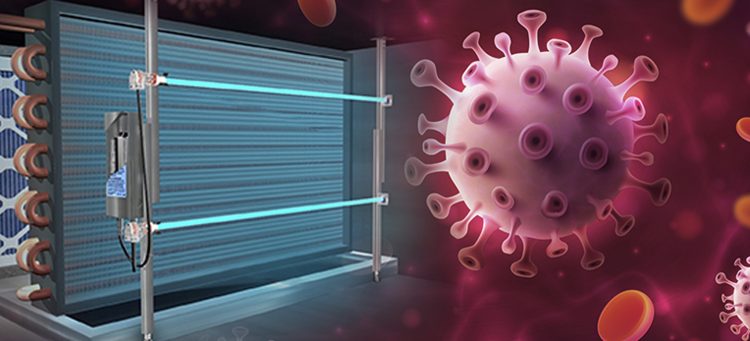
Airflow & Containment
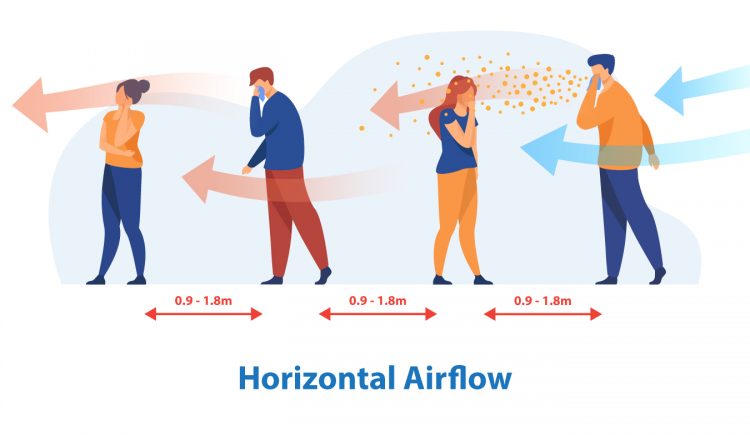 ASHRAE states that aerosols generated by coughs and sneezes generally affect other people within a range of 0.9 to 1.8m. Oftentimes, MVAC systems distribute air horizontally between people, travelling along corridors and areas where people queue. If one person coughs or sneezes, the mucosal droplets quickly spread to nearby people.
ASHRAE states that aerosols generated by coughs and sneezes generally affect other people within a range of 0.9 to 1.8m. Oftentimes, MVAC systems distribute air horizontally between people, travelling along corridors and areas where people queue. If one person coughs or sneezes, the mucosal droplets quickly spread to nearby people.
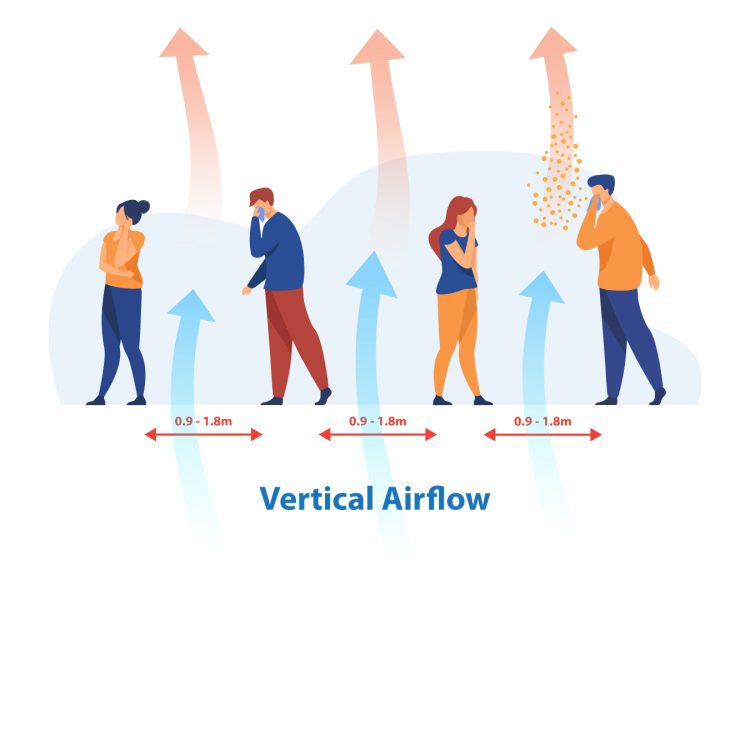 Conversely, vertical airflow ventilation system pull aerosolised droplets up or down and away from the breathing zone of adjacent people. This methodology is use in commercial kitchens, and industrial / medical applications, where contaminants are locally extracted before mixing with cleaner air. This approach can be applied to congested areas such as washrooms, elevators and elevator lobbies, escalators, kiosks; or similar bottleneck areas within buildings where people queue or are forced together. Specialist CFD analysis is the key to achieving the desired flow regime.
Conversely, vertical airflow ventilation system pull aerosolised droplets up or down and away from the breathing zone of adjacent people. This methodology is use in commercial kitchens, and industrial / medical applications, where contaminants are locally extracted before mixing with cleaner air. This approach can be applied to congested areas such as washrooms, elevators and elevator lobbies, escalators, kiosks; or similar bottleneck areas within buildings where people queue or are forced together. Specialist CFD analysis is the key to achieving the desired flow regime.

Direct Contact, Monitoring & Control
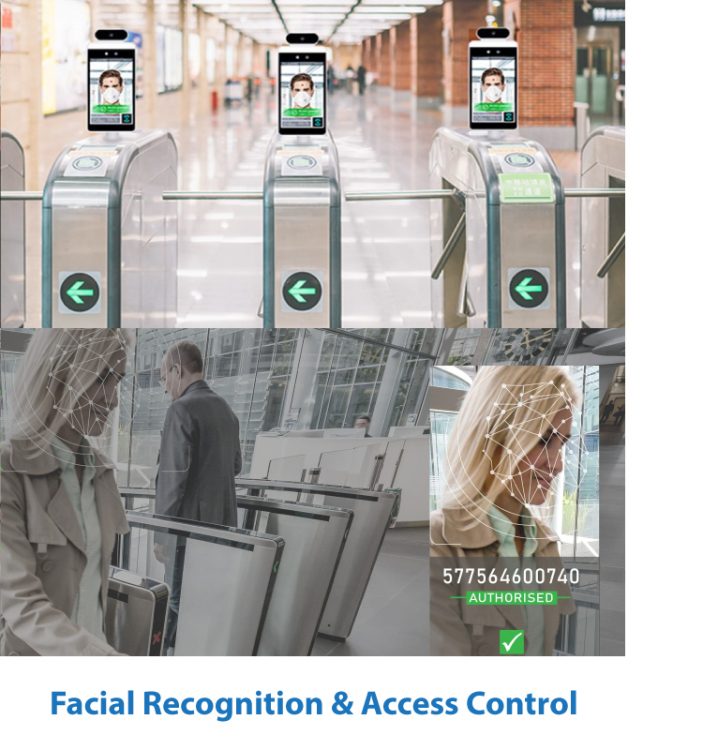 Facial recognition can be used for contactless access control. The automated system identifies the person, detects if they are wearing a face mask, checks body temperature, then permits access accordingly.
Facial recognition can be used for contactless access control. The automated system identifies the person, detects if they are wearing a face mask, checks body temperature, then permits access accordingly.
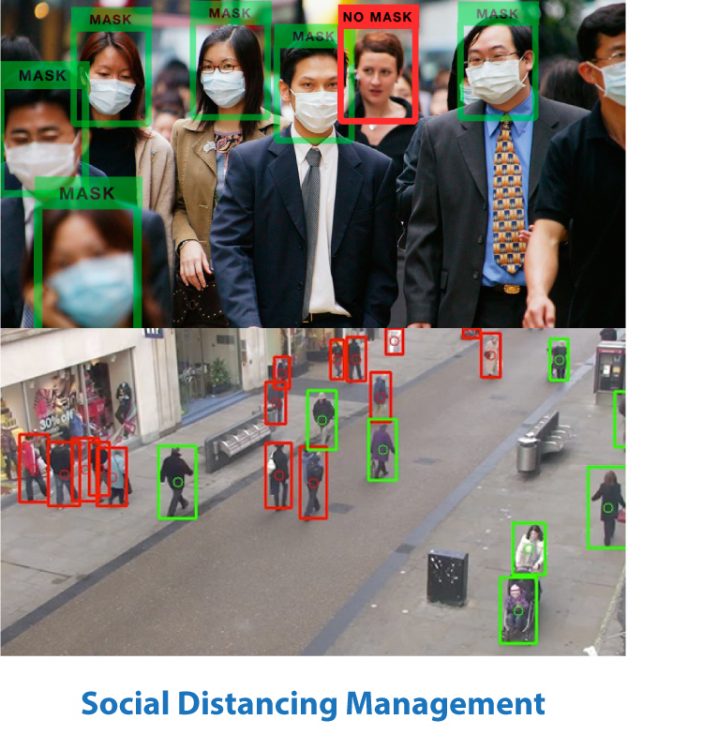 CCTV can be used for counting people to alert building management to groups of people not observing social distancing rules.
CCTV can be used for counting people to alert building management to groups of people not observing social distancing rules.
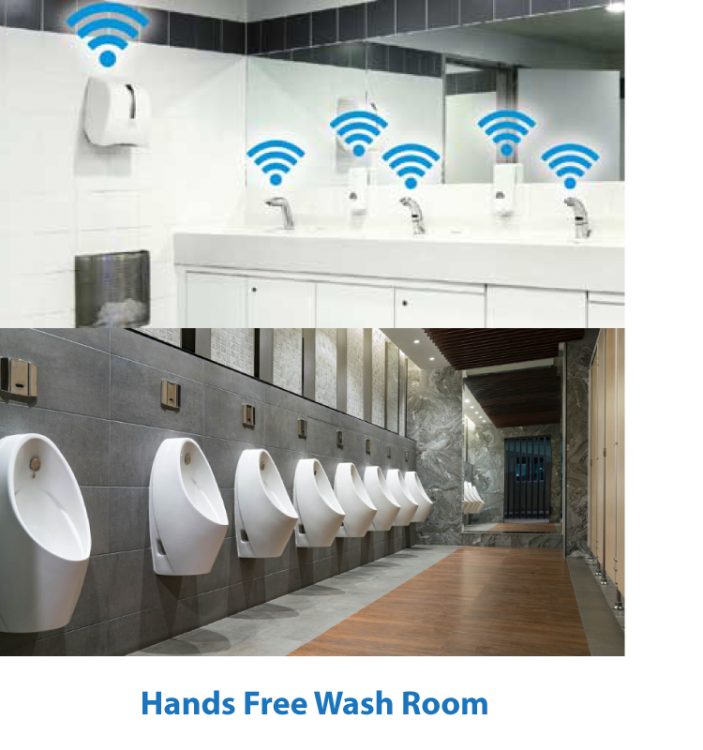
Air hand driers can aerosolise contaminated water droplets, so should be avoided.
Also consider hands free systems such as:
1. Light sensors to replace switches;
2. Destination control for elevators and remove all buttons in the lift car;
3. Sensor controlled Faucets, WC’s and Urinals.
Conclusion
Engineering solutions alone cannot prevent or eliminate viruses in indoor environments. The objective of pandemic resistant design is to reduce physical transmission from surface to hands to eyes/nose/mouth; lessen airborne virus loads; and improve monitoring and detection. The advantage of engineering solutions include:
- They work against all types of viruses; past, present, and future.
- There socially responsible and preventative, not reactive;
- They don’t require participation or education of the public.
Pandemic resistant design for the indoor environment provides a cleaner, safer, better environment for all, both now and for the future.
Matthew Silvester
Director

